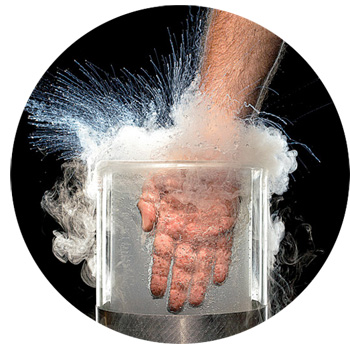If you have to move a heavy object, you can use a simple machine to make your job easier. One of the oldest simple machines is the inclined plane.
A wheel chair ramp is an example of an inclined plane. If you’ve ever been in a wheelchair and tried to get inside a building without a ramp you know how helpful an inclined plane can be. The longer an inclined plane is, the more mechanical advantage that it provides. This means that if you have to go up 5 feet in height, a ramp that is 30’ long will be easier to use than a ramp that is 10’ long. A wedge is really just two inclined planes stuck together. Wedges can make it much easier to lift heavy objects or to separate things that are held together. Think about how a splitting maul is used to split firewood. The wedge point is driven into the wood and as force is applied to the flat end of the maul the wood is forced to slide apart as it travels along the dual inclined planes of the wedge.
A wedge is really just two inclined planes stuck together. Wedges can make it much easier to lift heavy objects or to separate things that are held together. Think about how a splitting maul is used to split firewood. The wedge point is driven into the wood and as force is applied to the flat end of the maul the wood is forced to slide apart as it travels along the dual inclined planes of the wedge.
Helio Gracie spent a lot of time thinking about and developing techniques that made use of a mechanical advantage like the wedge. There are many times while rolling that we need to create separation between ourselves and our opponent, or separate an opponent’s grip, or make space in our opponent’s defense to attack. If you understand the principle behind the wedge, you can spot opportunities to use it to your advantage.
The book Strategic Guard shows how Joe Moriera uses the blade of his hand like a wedge under his opponents jaw when attempting to drive his forearm across the neck to set up escapes from side control. It also shows him using a wedge formed by the point of his elbow to maintain separation between himself and his opponent’s chest from the same position.
In some of his videos, Marcelo Garcia shows how he uses the narrowest part of his forearm as a wedge to drive under his opponents chin while attempting to set up chokes from the back. He does this because he can’t always just reach across the neck and get a good deep wrap when fighting a skilled opponent. He takes what he can get and uses the advantage of the wedge to advance his position.
My instructor Aaron Blake recently taught a series on the Kimura from modified mount. Sometimes your opponent is extremely strong and it's difficult to finish the move when he has a good grip on his own belt or his own arm. Aaron showed a variation that uses a wedge formed by his knee to help separate the opponent’s grip and finish the move.
The blade of your hand, the elbow, and the knee all form natural wedges that can be used to create space, and we all know that if you can create and control space during a match you have a good chance of winning the fight. The more narrow you can make your wedge the more advantage it provides.
What are some other times when you use a wedge to create opportunities?
- Bill Thomas
BJJ LIFESTYLE
blog comments powered by Disqus





